UofMUSCLE.com – M.U.S.C.L.E. Figures from Mattel
Literature 400 – Industry Trade Magazines
With most businesses there is not a preconceived notion of fun. Neither children nor adults are likely to attribute the characteristic of fun to the manufacturing of construction castings or agricultural biotechnology, but it seems very appropriate for a toy company.
Whether the characteristic of fun is attributed or not, there is no question that the toy industry is a business. It faces many of the same challenges as other industries. It also has many of the same resources as other industries. Most interesting for M.U.S.C.L.E. collectors are the toy trade magazines of the mid-to-late 1980’s.
Research has uncovered four toy trade magazines that included M.U.S.C.L.E. toys as, at least, a mention in an article. Other trade magazines, and even one non-trade magazine, offer an insight into the toy industry’s perception of M.U.S.C.L.E.
In February of 1986 two different industry magazines were spotlighting the upcoming products for the 1986 American International Toy Fair in New York City. While a hardcopy has not been discovered, online periodicals uncovered this mention of M.U.S.C.L.E. from the February 1986 Playthings on page 139:
M.U.S.C.L.E.s are miniature action figures and accessories with a wrestling theme that are intended for collecting, trading, and playing. There are 230 of these highly detailed figures available. The Battlin’ Belt enables kids to transport these figures, and the Buckle turns into a miniature wrestling ring.
The Toy Trade News from February of 1986 also focused on the Toy Fair. Their main cover story read, “Toy Fair ’86 – Buying For The All-American Kid.”
This magazine had several mentions of M.U.S.C.L.E and one notable exception. The most visually striking piece of the magazine was a Mattel insert. It featured several Mattel toys with comparatives under each picture designed to complete the phrase, “Mattel is…” For M.U.S.C.L.E., the phrase was, “Mattel is Tougher.”
The picture also highlights something interesting. All of the figures are from the M.U.S.C.L.E. poster. It appears that Mattel actually used M.U.S.C.L.E. figures, instead of Kinkesi Kinnikuman figures – which appear to be what they used for the 1986 catalog picture. Some of the figures also seem to have the M.U.S.C.L.E.-bend, most noticeably the head of #70 and the head of #91. This picture is not known to have been used in any other advertisements.
Another interesting piece of the article was a brief write-up from the “Inside the Industry” section. The partnership between Mattel’s Masters of the Universe and Nestle Quik yielded a National Premium Sales Executive Showcase award. The success of this partnership makes Nestle’s willingness to work with Mattel again on M.U.S.C.L.E. very understandable.
Mattel’s dominance in the industry is reinforced by some survey data presented by Media Market Reports, Inc. in the Toy Trade News magazine. Mattel holds the top spot in two categories of the survey: (1) Most Advertised Individual Toy by Retailers – Masters of the Universe; and (2) Most Heavily Advertised Brands by Retailers – Mattel. The success of Masters of the Universe and support from retailers makes Mattel’s struggles in 1987 to “maximize core brands” more difficult to understand.
The highlight of the Toy Trade News is the Toy Fair section of the magazine. The coverage is by category (outdoor, male action, etc.) and then by company (Coleco, Hasbro, etc.). M.U.S.C.L.E. appears in the male action figure section for Mattel. The write-up reads:
M.U.S.C.L.E., more than 200 beastly invaders. A few miniature figures can be carried in a Battlin’ Belt.
To the right of the M.U.S.C.L.E. write-up is an uncropped picture from the 1986 Mattel catalog. The small size of the picture and delicate nature of the catalog make it difficult to fully inspect and display the picture. This is the largest version of the picture that has ever been discovered. A similar, but not as wide, version of the picture can be seen in the December 1986 Playthings magazine. Additional information about these pictures can be read in The Uncropped Catalog Pictures posting.
Unmentioned in Mattel’s game section is the M.U.S.C.L.E. board game. It is unclear if the game was unfinished at the time of publication or simply omitted by the editors.
M.U.S.C.L.E. returned to industry publications with Playthings’ April 1986 edition. The cover story was “New Technology Changes Face Of Plush,” but it was the next headline that applied to M.U.S.C.L.E., “Action Figures Battle For Shelf Space.”
While the second cover story included M.U.S.C.L.E., there were some very interesting pieces of information prior to the article. The first piece was a short write-up regarding Mattel’s 1985 sales. It was reported that Mattel’s net sales rose 19% to 1.051 billion dollars and a net income of 78.7 million dollars. It is interesting to note that the article uses the pro forma income. This helps to control for any “unusual” events and was designed to make a company look more finically solvent. With the advantage of 20/20 hindsight the financial challenges Mattel may have been facing become more clear – leading to the “maximizing of core brands” and eventual discontinuation of M.U.S.C.L.E.. Mattel reported a 1984 pro forma net income of 85.6 million, then a 1985 pro forma net income of 78.7 million – that’s a 6.9 million dollar decrease.
This decline in performance is clearly reflected in Mattel’s stock price. Looking at January 1984 through December 1988 we can see the increase in stock price leading up to the Bandai partnership. In July of 1985 Mattel’s stock is at its height (for our finite window of time) from that point on we see continued decreases – even with the occasional peak. Again, this financial indicator helps us better understand why Mattel could have considered M.U.S.C.L.E. an expendable brand.
A constant in the Playthings magazine is a section titled, “What’s Selling.” It took toy-industry employees, often store owners, from various locations around the United States and gave them an outlet to share the successes and struggles they were experiencing. M.U.S.C.L.E. was mentioned three times in: (1) Chicago; (2) Los Angeles; and (3) San Francisco.
The Chicago section gave Ted J. Rakstis an opportunity to share his insights. He spoke about many toys, but his mention of M.U.S.C.L.E. said:
While calls for Masters slackened, Mattel gained ground with other items. The best appeared to be its MUSCLES line, selling at about $1.29 for the four-figure pack to $8.49 for the 28-figure unit. “MUSCLES really are stupid, but they sell,” one dealer observed.
Financial indicators aside, it was not a good sign for M.U.S.C.L.E. if dealers were not excited about the brand.
Joanne Gamlin was the Los Angeles expert. She praised Mattel’s 1986 line, echoing what she had heard from others. She spoke with two retailers before Toy Fair, they continued their praise of Mattel. She reported:
Mattel was a big winner though. Its ’86 line, including Slime Pits, Leon Neon, and MUSCLEs were homerun hitters, he revealed.
While this retailer expected results from M.U.S.C.L.E., it is more difficult to gauge their endorsement of the product.
Robert Wanderer reported on the San Francisco market. While Los Angeles seemed happy with Toy Fair, the opposite was true of San Francisco retailers. They were disappointed by the war and violence, noting that even Fisher-Price was involved. Interestingly, Mr. Wanderer seems to imply that M.U.S.C.L.E. figures do not fall into the violent toy category. He said:
Meanwhile, back at the store, there seemed little evidence of any public demand for the kind of violent toys featured at the fair. Mattel’s new Poppies, foldup plush animals, scored well at $18.88. Mattel’s MUSCLES little wrestlers grabbed a stranglehold on the low end at points like $1.35 and $1.44, while the larger sets of 28 went with tags like $8.88 and $9.99.
Mr. Wanderer, along with the prior two mentions, all struggled to properly punctuate M.U.S.C.L.E. and even referred to it as “MUSCLES.” While M.U.S.C.L.E. was a new brand, it is clear that the toy “experts” were not 100% sure what the product was actually called. Mr. Wanderer even called Mattel’s Popples the incorrect name of “Poppies.”
The action figure market was exploding in the early 1980’s. Playthings recognized this and wanted to explore the topic with their April 1986 edition. The article reports on the influx of new brands and the importance of TV shows and advertising. Again, with 20/20 hindsight the issue that appears to be missing is video games. Retailers are painfully unaware of the impact video games will have on toys, most noticeably the introduction of Nintendo within the next few months.
The mention of M.U.S.C.L.E. in the article is almost in passing, there is one sentence:
Buyer Dennis Cherry is also extremely high on Mattel’s M.U.S.C.L.E. action figures.
This minor inclusion likely suggests Mattel and M.U.S.C.L.E. were going to have a difficult time securing the precious retailer shelf space.
The last part of the April 1986 Playthings worth mentioning harkens to the unfortunate future of M.U.S.C.L.E. – closeouts. Many collectors remember buying 28-packs at various closeout stores. Playthings had an article on a New York closeout store, Odd Job. Collectors will likely appreciate, and long for, the shelves of sealed toys that can be seen in the pictures. Behind the co-founder of Odd Job, Howard Snyder, are shelves stuffed with Fisher-Price toys. In the picture below Mr. Snyder boxes of sealed Star Wars can be seen, including Jabba’s Throne, the Dagobah playset, and Dewback creatures.
In October 1986 the popular magazine The Atlantic ran a story called, “Where Toys Come From.” While this is not a trade magazine, it does offer some insight into the toy industry of the mid-1980’s and some history of Mattel. For example, the name Mattel comes from the names of Harold Matson and Elliot Handler – the founders of Mattel. And before becoming one of the biggest toy makers in the world Mattel made picture frames and miniature furniture from the polyurethane left over from airplane nose cones.
The article also shares that the 1986 Toy Fair featured 871 exhibitors of which 96% were American companies. The show also drew approximately 15,000 buyers from over 60 countries. In contrast the 2008 Toy Fair featured over 1200 exhibitors and drew 20,000 attendees.
The changing role of Toy Fair in 1986 is also examined:
Until the mid-1970s as many as 70 percent of all toys sold at retail each year were sold during the six weeks before Christmas. According to the usual pattern, buyers ordered these toys at the Toy Fair, received them in the summer, and paid for them in December, a practice known in the business as “dating.” Often the new toys were not put on the shelves until mid-autumn. By the first of the new year the toy year was over.
Today Christmas sales account for only about half of the year’s toy business. The Toy Fair has declined slightly in importance as the selling season has lengthened; new toys are now introduced year-round. By this Christmas many of the season’s most popular toys will have been on the shelves (not to mention on the tube) for months.
While M.U.S.C.L.E. was first included in the 1986 catalog, it was difficult to pinpoint when the figures were released. Nathan Newell had given an excellent, data driven, explanation of when the figures were likely released. This article is the first time an independent party, written during 1986, clarifies that products were often released prior to their inclusion in a catalog.
The Atlantic also mentions an interesting aspect of Toys R Us. During the 1980’s Toys R Us was a juggernaut transforming the toy industry. One of the many perks the store received was that some toys were tested in the stores before final production decisions were made. The article gives an example of sample product being shipped to stores up to four months before the big Christmas push. This practice could be a possible, and simple, explanation for the existence of Super Rare (LINK) figures.
The December 1986 Playthings magazine produced possibly the highest accolades M.U.S.C.L.E. ever received. The cover story was “GI Joe Heads 1986 Best Sellers.” Surprising to collectors today, and potentially even more surprising to Mattel in 1986, M.U.S.C.L.E. was also one of the top-ten selling toys of 1986.
Before the reader turned to the cover story, the “What’s Selling” section would greet them. M.U.S.C.L.E. was again mentioned multiple times. For a second time Mr. Wanderer in San Francisco mentioned M.U.S.C.L.E. He said:
…the Mattel MUSCLES figures still good at $1.49-$9.98.
Phyllis Dishman wrote about the Dallas/Ft. Worth area. She noted:
Wrestlers continue to appeal. Mattel’s Knockin’ Ring at $6.99 and the 28-pack MUSCLE figures at $4.99 were selling well for one store, while another reported brisk sales on the larger WWF figures.
Phyllis’ mention of the 28-pack being sold for $4.99 is either an error or possibly a clearance price. Previous write-ups in Playthings had listed the 28-packs in the eight and nine dollar range, while Sears had the sets for $6.99.
The “What’s Selling” section acted as a wonderful lead in to the cover story for Playthings. They highlighted the top ten selling toys of 1986 according to nationwide buyers for 5400 stores. While GI Joe found itself at the top of the list, M.U.S.C.L.E. ranked a very respectable number nine wedged below Madballs and above WWF Superstars.
While the accolades were wonderful, collectors are able to enjoy another version of the uncropped 1986 M.U.S.C.L.E. catalog picture. This is the same picture as the 1986 February Toy Trade News. There is a positive and negative to this picture. The positive is that the picture is in full color, unlike the Toy Trade News version. Unfortunately, the picture is slightly cropped. It is not as wide as the Toy Trade News version and cuts off some of the figures on the right side. Additional information about these pictures can be read in The Uncropped Catalog Pictures posting.
The December 1986 Playthings was the last known mention of M.U.S.C.L.E. in a trade publication. Subsequent industry articles about male action figure toys gave a multitude of reasons for slumping action figures sales. Some articles mentioned a surplus of action figure lines, a surge in plastic prices, a reduction in products produced in Asian countries, the failure of various cartoons, and several other possibilities.
The December 1987 Playthings contains the best explanation for the decline on its cover. Nintendo was named the top selling toy of 1987. The toy industry, specifically male action figures, was forever changed by Nintendo’s success. Toy stores had put themselves in a dangerous financial position by purchasing too many lines of action figures. Smaller orders from these stores meant only the strongest action figure lines would survive. Mattel was especially impacted by lagging action figure sales. It is very likely that Mattel already knew that M.U.S.C.L.E. would be cancelled by the time the December 1987 Playthings was published.
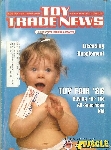
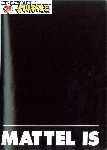
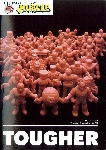
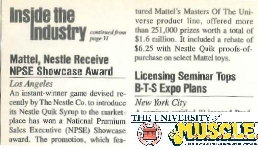
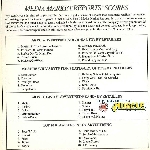
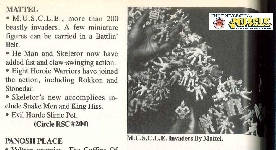
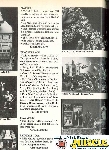
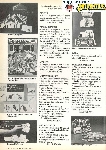
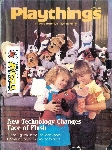
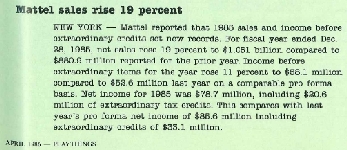
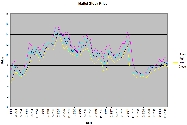
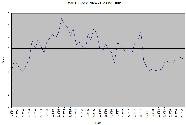
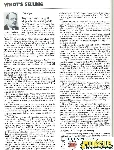
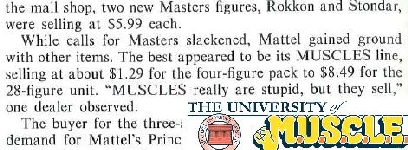
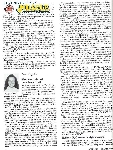
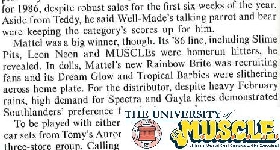
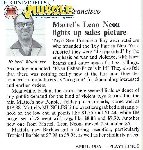
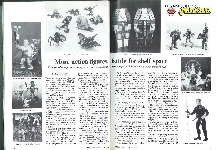
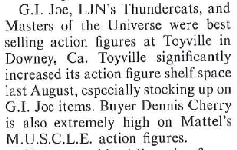
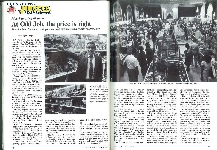

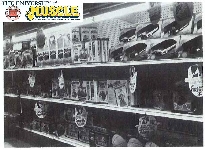
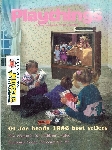
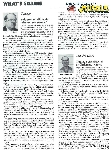
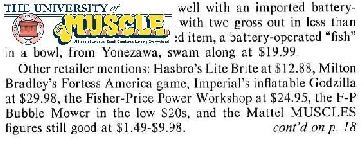
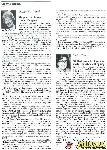
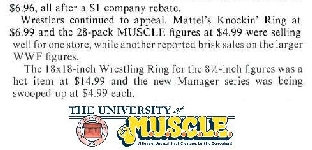
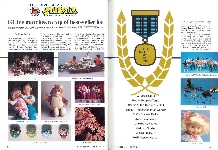

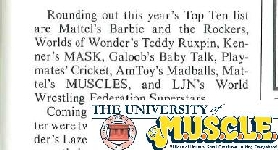
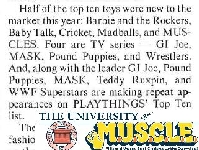
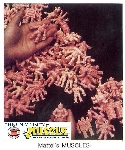
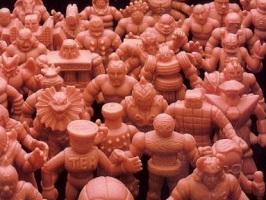
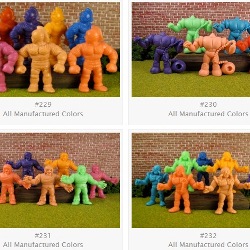
#1 by galactiboy on November 10, 2009 - 11:34 am
Absolutely fascinating read!
I’m not sure if it helps or not, but I know for a fact I had M.U.S.C.L.E. figures when I was in 2nd grade (1985-1986 school year). I remember this because I moved between the summer of my 2nd and 3rd grade year and I remember first taking M.U.S.C.L.E. figures to school with me at my first elementary school. Now, I can’t say for sure if it was during the fall of 1985, or the spring of 1986… but I am pretty sure it was 1985.